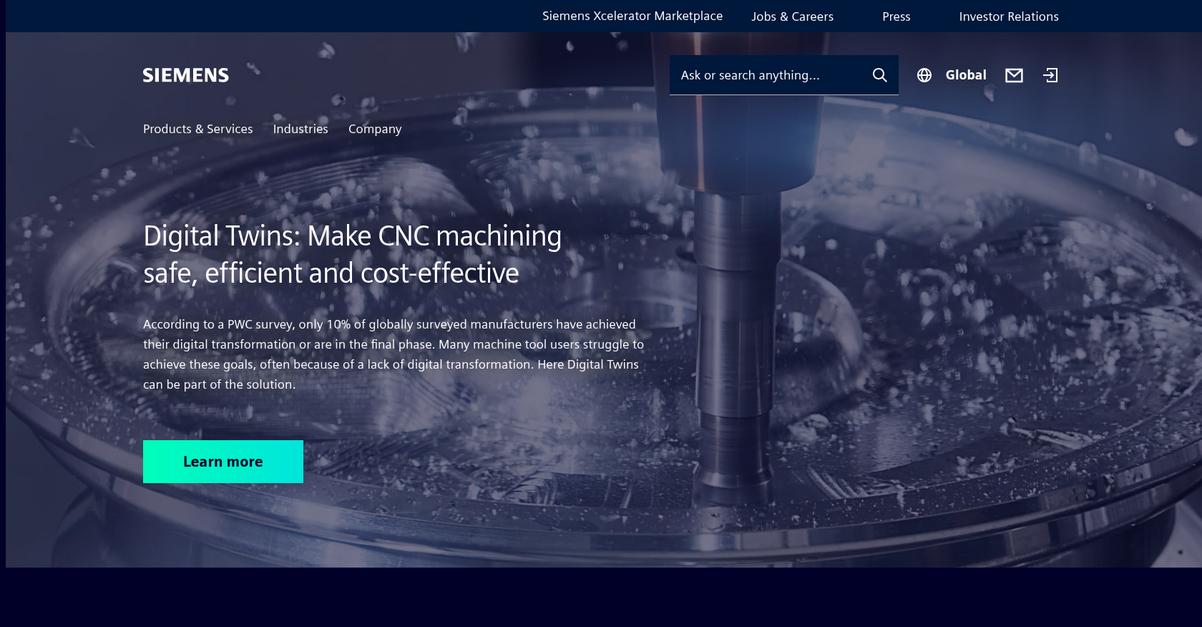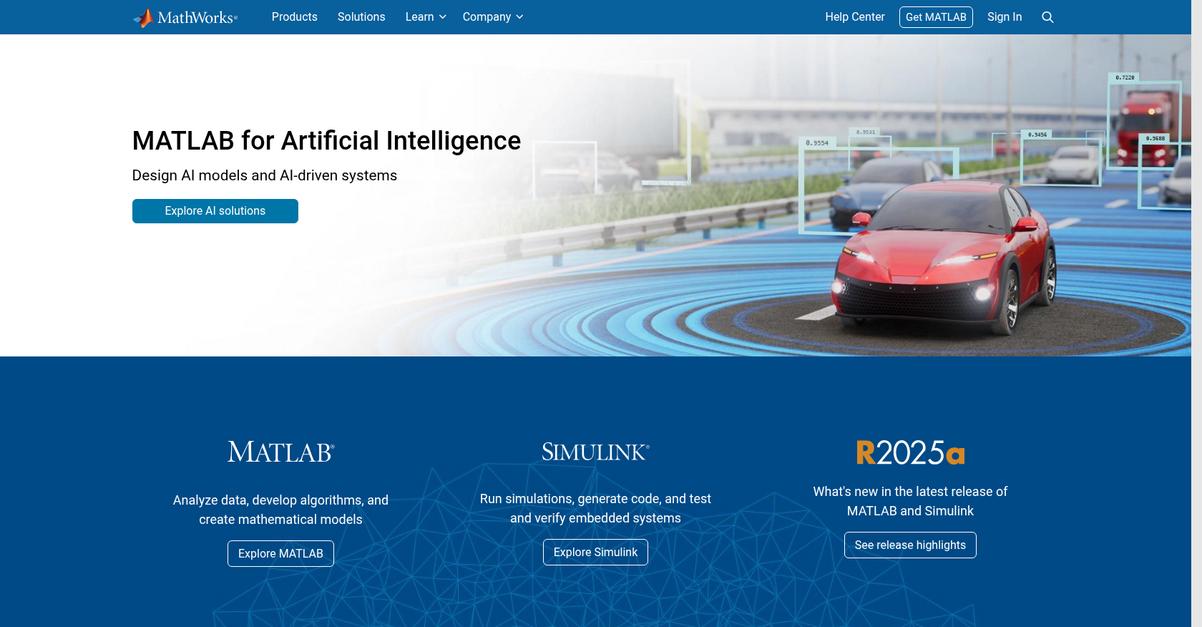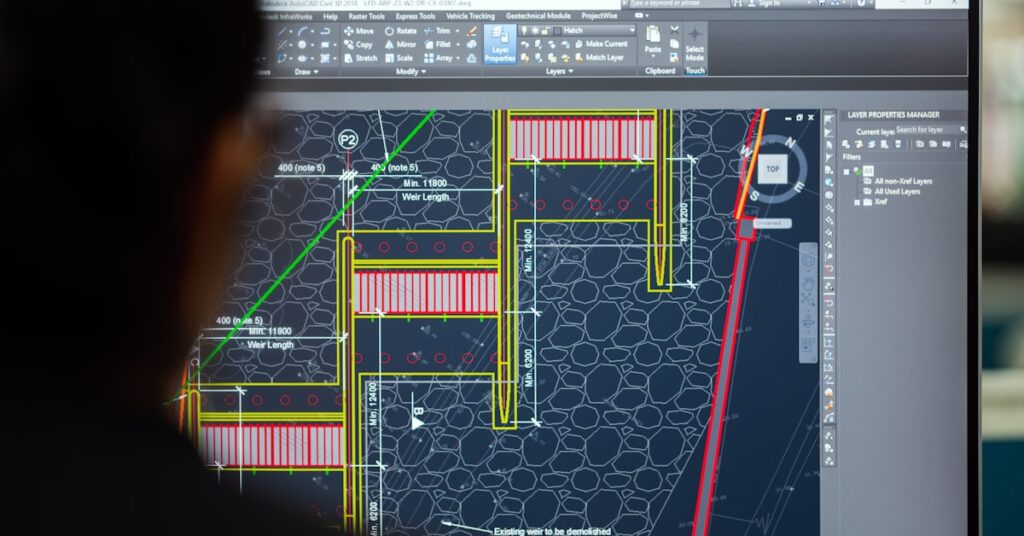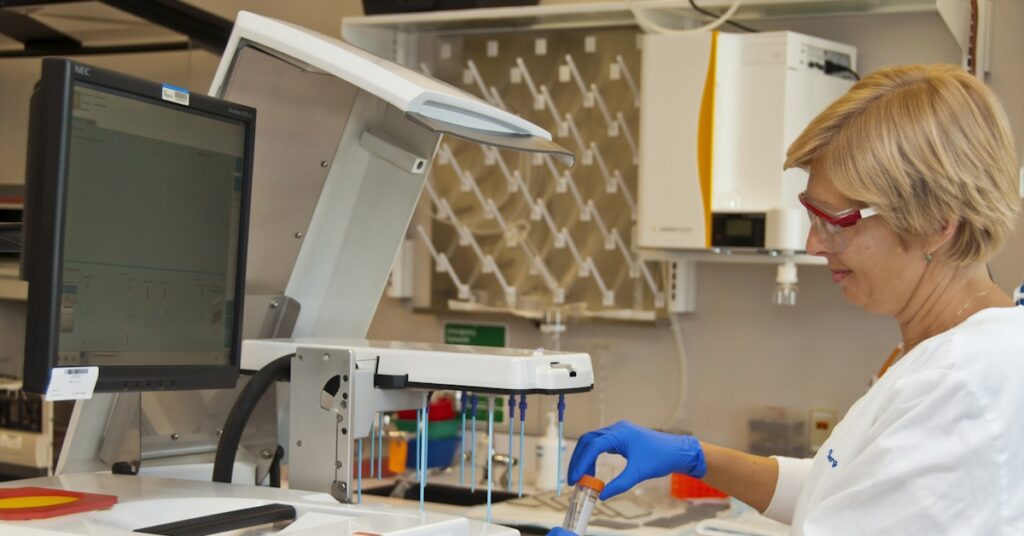Are data silos delaying projects?
Juggling spreadsheets and disconnected field notes creates version control nightmares. It makes real-time collaboration and data integrity nearly impossible for your engineering team.
This constant back-and-forth causes critical errors and timeline overruns, putting tight project margins at risk.
A Vectorworks report found that 37.5% of AEC professionals avoid new digital tools due to adoption barriers. This hesitation only deepens existing workflow inefficiencies.
But what if you could unify your data? The right platform can streamline your entire workflow from field capture to compliance.
In this article, I’ll guide you through the best engineering industry software to solve this. I’ve focused on tools designed to break down data siloes and accelerate your projects.
You’ll learn how these platforms centralize documentation and automate compliance checks. This helps you reduce errors and improve overall team productivity.
Let’s get started.
Quick Summary:
| # | Software | Rating | Best For |
|---|---|---|---|
| 1 | Dassault Systèmes → | Large multi-disciplinary firms | |
| 2 | Siemens → | Manufacturers & civil firms | |
| 3 | PTC → | Hardware & software developers | |
| 4 | Bentley Systems → | Civil & structural engineers | |
| 5 | Trimble → | Construction & surveying firms |
1. Dassault Systèmes

Struggling with fragmented data and compliance hurdles?
Your engineering firm can centralize operations, integrating all aspects of your business onto a single platform. This means you can overcome spreadsheet inefficiencies and enhance version control.
The 3DEXPERIENCE platform brings together diverse talents, breaking traditional silos. This empowers your organization to innovate and produce in entirely new ways.
Unify your processes.
This powerful platform improves execution and accelerates innovation, helping you transition from fragmented data to a unified system. It offers 3D modeling and simulating applications, allowing you to create virtual twins of products and supply chains.
You can revolutionize your workflows with social, collaborative, and information intelligence applications. This helps your team streamline design, product lifecycle, and bill of materials management, ensuring greater synergy between your subsidiaries. Your team benefits from a single digital thread for all activities, integrating engineering and manufacturing teams with the same data.
The result is improved team productivity, reduced errors, and faster project delivery through a unified platform for field data capture and automated compliance reporting.
While this article focuses on engineering, if you’re also looking for related insights, my guide on patient engagement software provides valuable information.
Key features:
- Virtual Twin Experiences: Create comprehensive virtual twins of products and supply chains, enabling predictive insights and optimized designs to reduce errors and improve compliance.
- 3DEXPERIENCE Platform: Unifies all business aspects in a single platform, enhancing collaboration and accelerating innovation by breaking down data silos for real-time syncing.
- Data-Driven Approaches: Leverage AI-powered Sourcing & Supply Chain Intelligence for embedding agility and integrating design, product lifecycle, and bill of materials management.
Dassault Systèmes features, pricing, & alternatives →
Verdict: Dassault Systèmes is ideal for engineering firms seeking the best engineering industry software to unify data and accelerate projects. Its 3DEXPERIENCE platform offers comprehensive virtual twin experiences, improving efficiency, reducing costs, and accelerating project delivery by integrating all aspects of your business on a single digital thread.
2. Siemens

Struggling with data silos and manual workflows?
Siemens offers Digital Twins as a solution to unify your data. This means tackling spreadsheet inefficiencies and version control head-on.
This powerful approach helps overcome the lack of digital transformation, which often hinders project managers from reaching their goals.
Here’s how Siemens helps.
Siemens introduces Digital Twins to streamline operations. This effectively consolidates platforms for improved field data integration and compliance.
You can expect to reduce manual workflows through real-time data syncing, eliminating many common pain points. Additionally, these capabilities support automated code compliance checks, crucial for civil and structural firms. This means your team can achieve faster project delivery and enhance overall productivity.
Ultimately, this empowers you to reduce errors via integration, ensuring scalability and supporting your business growth effectively.
Key features:
- Digital Twins for CNC Machining: Enhances safety, efficiency, and cost-effectiveness by simulating processes, a critical solution for manufacturing and engineering applications.
- Real-time data syncing: Integrates field data to eliminate silos, ensuring accurate and up-to-date information for your projects and reducing manual errors.
- Automated compliance checks: Streamlines regulatory adherence, helping civil and structural engineering firms meet compliance requirements with greater ease.
Siemens features, pricing, & alternatives →
Verdict: Siemens leverages Digital Twins to address core engineering challenges, positioning it as a top contender for the best engineering industry software. Its focus on unifying data and automating processes can significantly improve your project delivery times and reduce operational costs. A PWC survey shows only 10% of manufacturers achieved digital transformation, highlighting the critical need for solutions like Siemens.
3. PTC

Struggling with fragmented data and project delays?
PTC offers digital foundations to transform how your products are designed, made, and maintained, providing crucial collaboration tools for both hardware and software development. This means you can finally tackle product complexity head-on.
Managing configurations, variants, and documentation becomes simple, reducing errors and accelerating your project timelines. The result? You drive consistent, high-quality deliverables.
It’s time to unify your efforts.
PTC’s solutions empower engineers to accelerate product development by offering robust collaboration tools. You can efficiently manage product complexity, which helps reduce costs and significantly improve product quality across your entire value chain.
Additionally, manufacturers rely on PTC for real-time production performance and improved supply chain collaboration, enhancing overall efficiency. This includes optimizing service operations to maximize uptime and reduce costs, ensuring customer satisfaction. Plus, PTC’s digital thread leverages product data strategically, driving growth and innovation, allowing for concurrent work throughout the product lifecycle.
Deliver more value, faster.
Beyond engineering, understanding how data drives business decisions is key. You might find my guide on best marketing analytics tools helpful for a broader perspective.
Key features:
- Accelerated Product Development: Utilize strong collaboration tools for hardware and software to manage complexity and reduce costs in your engineering projects.
- Enhanced Manufacturing Efficiency: Improve real-time production performance and supply chain collaboration, streamlining your manufacturing processes for better output.
- Optimized Service Operations: Maximize product uptime and reduce service costs, transforming customer experience through efficient, high-quality service delivery.
PTC features, pricing, & alternatives →
Verdict: PTC stands out as the best engineering industry software because it unifies your data, addressing spreadsheet inefficiencies and version control challenges. Its focus on managing product complexity and improving quality means you can accelerate project delivery and drive consistent results.
4. Bentley Systems

Struggling with fragmented data and compliance headaches?
Bentley Systems offers intelligent digital twin solutions to centralize your engineering data, improving project delivery and asset performance across disciplines.
This means you can overcome resource shortages and excel, making better-informed decisions by understanding assets in their full context.
Streamline your engineering projects.
Bentley Systems helps you achieve higher productivity by leveraging AI-powered engineering applications and open digital twin software. This means you can manage and use data effectively, regardless of its origin.
You can visualize, query, and analyze your assets with 3D geospatial capabilities, enhancing decision-making and project outcomes. Additionally, their open standards, open-source technologies, and open APIs ensure your data flows smoothly across your entire ecosystem, avoiding vendor lock-in.
The result is improved design, construction, and operations workflows for more sustainable infrastructure.
Key features:
- Digital Twin Solutions: Empowers you to design, build, and operate more resilient infrastructure through intelligent digital twin adoption for enhanced project delivery.
- AI-Powered Productivity: Increases productivity and improves outcomes across your organization with AI-powered engineering applications, boosting efficiency in daily tasks.
- Open Data Ecosystem: Ensures data flows freely across your systems using open standards, open-source technologies, and open APIs, preventing vendor lock-in.
Bentley Systems features, pricing, & alternatives →
Verdict: Bentley Systems stands out as the best engineering industry software solution, offering comprehensive tools that unify data and accelerate project delivery for civil, environmental, and structural firms. By providing digital twin solutions, AI-powered applications, and an open data ecosystem, it directly addresses critical pain points like spreadsheet inefficiencies and version control challenges, as seen with QK4’s 90% reduction in bridge survey time.
5. Trimble

Struggling with fragmented data and project delays?
Trimble offers connected hardware and software solutions that unify your data and accelerate project delivery for engineering firms.
This means you can say goodbye to spreadsheet inefficiencies and version control issues, as Trimble helps you turn roadblocks into runways for your essential projects.
Here’s how to gain confidence at every turn.
Trimble provides connected solutions for designing and constructing buildings, operating infrastructure, and mapping the world, keeping your projects moving forward.
You can leverage their precise positioning, 3D modeling, and data analytics to improve team productivity through centralized documentation and reduce errors via integration with design tools.
For example, over $500 billion of new construction project value is managed annually through Trimble ERPs, and 1 million hours of surveying and mapping work are done monthly with their technology, showcasing its real-world impact.
The result is confidence, end to end.
Key features:
- Connected Solutions: Trimble empowers you to unify field data and workflows, ensuring everyone works with the latest information to avoid costly errors and delays.
- Precise Positioning & 3D Modeling: You can leverage advanced tools for accurate data capture and detailed 3D models, improving design precision and compliance verification.
- Data Analytics & ERP Integration: Their software offers powerful data analytics capabilities and integrates with ERPs to streamline project management, budgeting, and resource allocation.
Trimble features, pricing, & alternatives →
Verdict: Trimble is undoubtedly among the best engineering industry software options, offering unified platforms that connect hardware and software to eliminate data silos and accelerate project delivery. Its ability to manage over $500 billion in construction project value annually showcases its robustness and capability to support business growth and improve your team’s productivity.
6. Hexagon

Tired of data silos and project delays?
Hexagon’s solutions improve productivity, quality, safety, and sustainability for vital industries. This means you can finally unify your field data and accelerate project delivery.
Their advanced capabilities, like digital precision to decode complexity, directly address your need for consolidated platforms, reducing manual workflows and ensuring accuracy.
Here’s how to simplify your operations.
Hexagon helps you achieve faster project delivery by digitizing physical assets, adding context with analytics and design, and enabling collaboration for better decision-making. You can then improve, automate, and enhance processes to create value.
They utilize AI-enabled portfolios and advanced sensors to precisely capture your physical assets, then combine them with spatial technology to deliver actionable insights and improve your ROI. Additionally, their Nexus platform integrates with third-party systems, boosting your productivity with AI and digitalization. This comprehensive approach unifies field data capture and provides automated compliance reporting, eliminating data errors and improving overall team productivity.
Achieve greater accuracy and efficiency.
Before diving deeper, you might find my analysis of best construction bidding software helpful.
Key features:
- Digital Twin Technology: Captures physical assets with advanced scanners and sensors, then combines them with AI and spatial technology for actionable insights, eliminating data silos.
- AI-Enabled Portfolio: Powers industry-specific workflows and platforms for smarter, faster results, accelerating projects and improving your return on investment.
- Nexus Platform Integration: Boosts productivity through seamless integration across Hexagon and third-party systems, streamlining workflows and enhancing cross-project analytics.
Hexagon features, pricing, & alternatives →
Verdict: If you’re seeking the best engineering industry software to centralize documentation, automate compliance, and achieve rapid project delivery, Hexagon’s unified platform is an excellent choice. Their advanced metrology solutions, as demonstrated by CERN and Oracle Red Bull Racing achieving 50% fewer faults, deliver the precision and integration needed for your civil, environmental, or structural firm.
7. MathWorks

Struggling with fragmented data and compliance headaches?
MathWorks offers MATLAB and Simulink to analyze data, develop algorithms, and create mathematical models, directly addressing spreadsheet-based inefficiencies. This means you can overcome version control challenges by unifying your data for robust project management. You can systematically use models throughout your development process.
Achieve faster project delivery with unified platforms.
MathWorks helps you design AI models and AI-driven systems, run simulations, generate code, and test embedded systems. This allows your team to develop electrical technology from components to full systems and streamline workflows. The result is improved team productivity and reduced errors, critical for meeting strict project margins. You can also explore Model-Based Design solutions, Robotics for designing and verifying autonomous systems, and Electrification solutions, ensuring your projects meet stringent compliance needs and support scalable growth without proportional software costs.
Elevate your engineering projects with precision.
Key features:
- Data Analysis & Modeling: Analyze diverse data, develop algorithms, and create mathematical models to unify fragmented information and reduce manual workflows.
- Simulation & Code Generation: Run simulations, generate code, and test/verify embedded systems, enabling automated compliance checks and faster project delivery.
- Model-Based Design & AI Systems: Systematically use models for development and design AI-driven systems, ensuring cross-project analytics and centralized documentation.
MathWorks features, pricing, & alternatives →
Verdict: MathWorks, with its core MATLAB and Simulink capabilities, is well-suited as the best engineering industry software for firms needing to unify data and accelerate projects. It helps reduce manual workflows through real-time data syncing, automated compliance checks, and cross-project analytics, which is essential for civil, environmental, and structural engineering firms.
8. Altair

Are data silos slowing your projects?
Altair addresses your pain points by unifying simulation, data analytics, and high-performance computing (HPC) into one cloud innovation gateway. This means your team gains dynamic, collaborative access to critical resources.
Your team can then explore further with open and programmable architecture, streamlining workflows and enhancing data accessibility across all engineering disciplines.
So, how does this work?
Altair solves this with a comprehensive suite of tools designed to accelerate your engineering projects. The Altair HyperWorks platform offers AI-powered design and simulation capabilities, simplifying complex problem-solving within an open, unified environment.
Additionally, the Altair HPCWorks platform optimizes compute resource utilization and manages intensive tasks for AI, modeling, and visualization, ensuring your projects run efficiently. This integrated approach, leveraging platforms like Altair RapidMiner for low- and no-code data analytics, fuels breakthroughs and democratizes data throughout your enterprise. The result is improved productivity and faster project delivery.
Before diving deeper, you might find my analysis of best EHS software helpful for ensuring your engineering projects meet compliance standards.
Key features:
- Unified Cloud Innovation Gateway: Altair One provides dynamic, collaborative access to simulation, data analytics, and scalable HPC and cloud resources, eliminating data silos.
- AI-Powered Design & Simulation: The Altair HyperWorks platform offers robust AI capabilities for solving complex engineering problems within a single, integrated environment.
- Optimized HPC & Cloud Management: Altair HPCWorks maximizes compute resource utilization and streamlines intensive task management for AI, modeling, and visualization.
Altair features, pricing, & alternatives →
Verdict: For engineering project managers needing to unify data and accelerate project delivery, Altair stands out as a best engineering industry software solution. Its integrated platforms for simulation, data analytics, and HPC, including AI-powered capabilities, enable faster design optimization and improved team productivity, evident in its success with over 16,000 organizations.
Conclusion
Ready to finally accelerate your projects?
Choosing the right platform is overwhelming. Conflicting features and unclear ROI make it a huge challenge to find a solution that truly unifies your workflow.
According to the Vectorworks report, BIM adoption delivers highest ROI in the AEC industry. This proves the right technology directly impacts your bottom line and overall project success.
Here’s the tool I recommend.
For those aiming to better unify their company’s information, my guide on best knowledge base software offers valuable insights.
From my experience, Autodesk offers the most comprehensive suite. It excels at unifying data and eliminating those frustrating version control issues for your firm.
Its AEC Collection integrates design and construction workflows seamlessly. Adopting the best engineering industry software like this helps you prevent costly errors and accelerate project timelines.
I highly recommend you start a free trial of Autodesk and see how it transforms your team’s productivity firsthand.
Your project efficiency will skyrocket.






